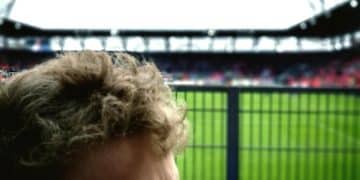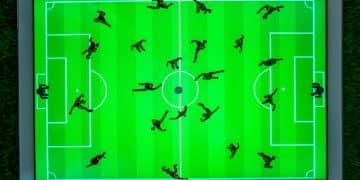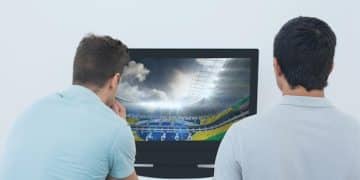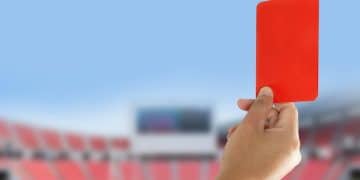How US Soccer Referees Utilize Tech to Improve Accuracy
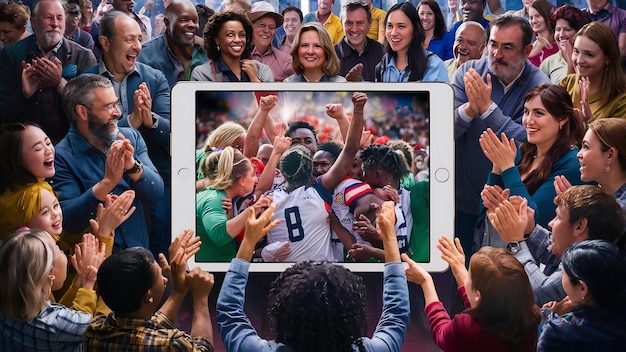
US Soccer referees are increasingly leveraging technology to enhance the accuracy and consistency of their decision-making. This includes using tools like VAR (Video Assistant Referee), goal-line technology, and wearable sensors to provide real-time data and improve overall game management.
Soccer, or football as it’s known globally, is a sport of passion, skill, and split-second decisions. In the United States, how are US Soccer referees using technology to improve accuracy and consistency in decision-making has become a crucial question. The integration of technology aims to provide fairness and precision to a game beloved by millions.
From video replays to wearable sensors, technology is transforming the way referees officiate matches, ensuring that the beautiful game remains as fair as possible. Let’s explore the specific technologies and their impact on US soccer.
The Advent of VAR in US Soccer
Video Assistant Referee (VAR) has become a significant component in modern soccer, including in the United States. This technology allows referees to review key decisions with the help of video replays, offering a chance to correct clear and obvious errors. But how exactly is it used, and what impact does it have?
How VAR Works in Practice
VAR involves a team of assistant referees who monitor the game remotely and review video footage to identify potential errors. When a critical incident occurs, such as a goal, penalty, direct red card, or mistaken identity, the VAR team can alert the on-field referee.
Key Decision-Making Areas for VAR
VAR primarily assists in four key areas to ensure fair play:
- Goals: Ensuring no infringements occurred during the build-up to a goal.
- Penalties: Verifying if a penalty should or should not be awarded.
- Direct Red Cards: Reviewing decisions that could lead to a player’s dismissal.
- Mistaken Identity: Correcting cases of mistaken identity when issuing cards.
While VAR aims to eliminate blatant errors, its implementation hasn’t been without controversy. Debates continue regarding the subjective interpretation of incidents and the time it takes to review plays. Despite the discussions, VAR represents a significant attempt to bring greater fairness and accuracy to US soccer.
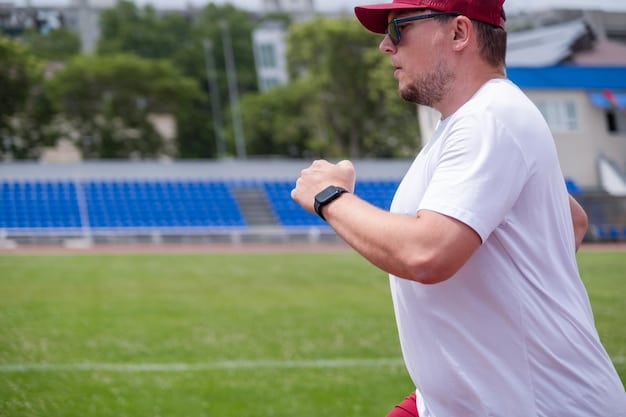
Goal-Line Technology: Eliminating Doubt
Goal-line technology (GLT) is another innovation designed to enhance the integrity of soccer matches. It provides instant confirmation of whether the ball has completely crossed the goal line. How does it work, and why is it so important?
GLT systems use cameras and sensors to track the ball’s position in relation to the goal line. When the ball fully crosses the line, the referee receives an immediate signal, typically via a vibration and visual alert on their watch.
Benefits of Goal-Line Technology
GLT offers several key benefits:
- Eliminates Doubt: Ensures accuracy in determining whether a goal has been scored.
- Instant Decisions: Provides referees with immediate confirmation, avoiding delays.
- Increases Fairness: Minimizes the potential for incorrect calls that could affect match outcomes.
By providing indisputable evidence, GLT supports referees in making accurate decisions, especially in crucial moments. This technology has become increasingly common in major soccer leagues and tournaments, enhancing the fairness and reliability of officiating.
Wearable Technology: Enhancing Referee Performance
Beyond video replays and goal-line systems, wearable technology is playing a growing role. How are US Soccer referees using technology to improve accuracy and consistency in decision-making by analyzing real-time data related to their own performance and positioning?
Wearable devices, such as smartwatches and GPS trackers, provide referees with real-time data on their movement, speed, and positioning during a match. This information can be used to assess their performance and identify areas for improvement.
Types of Wearable Tech Used by Referees
Some common wearable technologies include:
- GPS Trackers: Monitors distance covered, speed, and positioning on the field.
- Heart Rate Monitors: Tracks physiological responses to stress and exertion.
- Smartwatches: Delivers alerts and notifications, including goal-line technology signals.
Wearable technology helps referees optimize their positioning, manage their energy levels, and make more informed decisions. By leveraging these tools, referees can enhance their overall performance and contribute to a higher standard of officiating. It allows them to understand how are US Soccer referees using technology to improve accuracy and consistency in decision-making in real-time.
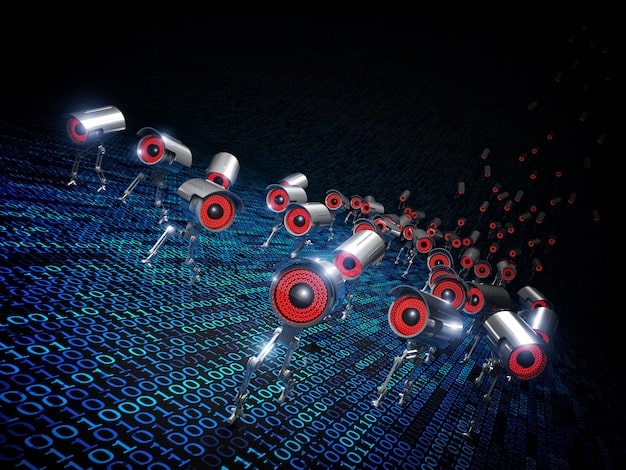
Communication Systems: Enhancing On-Field Coordination
Effective communication is crucial for referees and their assistants to manage the game effectively. Communication systems, such as headsets and microphones, facilitate real-time dialogue between the referee, assistant referees, and fourth official to improve their overall coordination.
Benefits of Advanced Communication Systems
Communication systems offer several advantages in soccer officiating:
- Real-Time Dialogue: Enables referees and assistants to discuss incidents and clarify decisions.
- Improved Coordination: Facilitates seamless teamwork and synchronized officiating.
- Efficient Game Management: Supports quick and accurate decision-making through clear communication.
With constant and secure communication, referees can address complex situations more effectively, ensuring that the game flows smoothly and fairly.
The Impact of Technology on Accuracy and Consistency
The integration of technology has brought about notable improvements in accuracy and consistency in US soccer officiating. How are US Soccer Referees Using Technology to Improve Accuracy and Consistency in Decision-Making is reflected in measurable data and feedback from players and coaches.
Studies have shown that technologies like VAR and GLT have reduced the number of incorrect calls, leading to fairer outcomes. By leveraging these tools, referees can make more informed and reliable decisions, minimizing the impact of human error.
This increased accuracy helps maintain the integrity of the game, preserving its credibility and inspiring greater confidence.
Challenges and Future Directions
While technology has brought positive changes, challenges remain in optimizing its use in soccer officiating. Some challenges include:
- Subjectivity: VAR decisions can still be subjective, leading to ongoing debates.
- Time Delays: VAR reviews can interrupt the flow of the game.
- Cost and Accessibility: Implementing technology can be expensive, limiting its use in lower-level leagues.
Looking ahead, further advancements in technology, such as AI-driven officiating tools, may offer even greater accuracy and efficiency. Finding the right balance between technology and the human element will be crucial as soccer continues to evolve.
| Key Point | Brief Description |
|---|---|
| ⚽ VAR | Video replays to correct clear errors. |
| 🥅 GLT | Instant confirmation if the ball crossed the line. |
| 🏃 Wearables | GPS and monitors to track referee movement. |
| 🗣️ Communication | Headsets for real-time team dialogue. |
FAQ
VAR (Video Assistant Referee) is a system where referees review video replays for key decisions like goals, penalties, and red cards. A team of VAR officials monitor the game remotely and alert the on-field referee to possible errors.
▼
Goal-line technology uses cameras and sensors to instantly determine if the ball has completely crossed the goal line. The referee receives an immediate alert, eliminating doubt in close calls and improving accuracy.
Referees use GPS trackers and heart rate monitors to analyze their movement, speed, and physiological responses during matches. This assists in optimizing positioning and managing energy levels, aiding in making better calls.
Challenges include the subjectivity of VAR decisions, time delays during reviews, and the high costs associated with implementing these technologies, which can limit accessibility for lower-level leagues.
Yes, headsets and microphones enable real-time dialogue between referees and their assistants. This enhances coordination and allows quick, accurate decisions to be made, improving overall game management.
Conclusion
In conclusion, technology has brought about significant advancements. How are US Soccer referees using technology to improve accuracy and consistency in decision-making through VAR, goal-line technology, and wearable devices has modernized the game.
While challenges remain, these innovations enhance accuracy, communication, and the overall fairness of soccer matches. As technology continues to evolve, it promises even greater improvements in the beautiful game.
